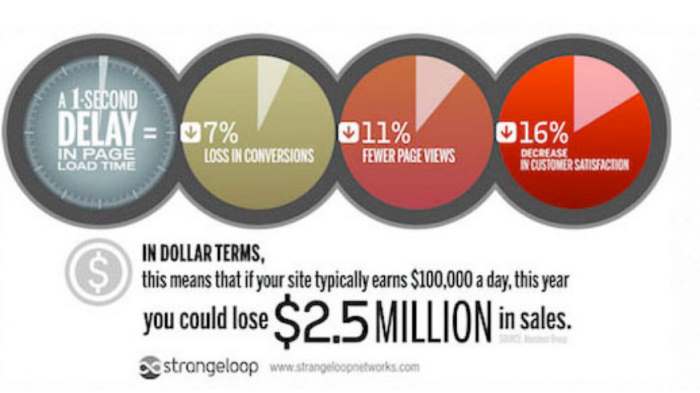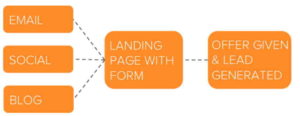4 WordPress Tricks That’ll Improve Your Chances Of Conversion
It’s no secret that the ecommerce industry has become a fierce playing field. With more competition than ever before, small business owners must make sure that their site is up to scratch.
From device adaptability to user personalisation, there are a lot of factors to think about when optimising your website for ecommerce success. The question is, have you thought about your content management system?
Over 43% of all sites use WordPress to design and post their content. From landing pages to blog posts, WordPress is an all-in-one site-serving machine and powers a third of the top 1 million websites.
However, in order to reap the benefits of WordPress and increase your chances of a conversion, your site needs to be speedy, hosted on a reliable platform and use the latest WordPress plugins. Read on as we reveal the benefits of site optimisation and 4 of the most crucial WordPress tricks and tweaks to add to your site strategy in 2023.

(Image Source: WPBeginner)
Why does site speed matter?
In a competitive industry, site speed could be the difference between a conversion and a webpage bounce. With at least ten sites selling the same product or service as each other, online consumers have the pick of the draw. While your deals may be better, a slow-loading site could quickly push them to a competitor.
In fact, over a third of consumers are likely to bounce off of a site if it takes longer than 3 seconds to load.
A site should have a bounce rate no higher than 41-51%. The more people that bounce off of your landing, the lower you fall in a Google Search rank. Google ranks sites in accordance with user engagement metrics, such as time spent on a page. If your site slows down in the face of large influxes of traffic, you’ll be likely to see a negative SEO payoff.
As you can see here, a slow-loading site could cost you up to $2.5 million in sales, especially if you’re competing against industry giants.
As we step into the future of site optimisation, page loading speed has become a primary concern for site developers. The question is, could your WordPress platform play a role in improving this? Let’s have a closer look.
4 changes to make to your WordPress site in 2023
If you want to optimise your ecommerce experience, learning how to use a WordPress-powered site could ensure your content management system is living up to its full potential.
Whether you update your WordPress plugins or simply change your theme structure, there are plenty of tweaks you can make to your WordPress site that will draw in more visitors.
1. Make sure your WordPress site is hosted
One of the first steps to take when optimising your WordPress site is to update your WordPress host. All sites are hosted on a server, but if you want your ecommerce store to be especially speedy, it’s smart to invest in a hosting provider like Hostinger or Kinsta who can ensure your site is prioritises peak performance.
Using a WordPress-powered web host comes with a number of site benefits:
- Faster site speeds: With the ability to maintain large influxes of traffic, private hosting providers have much larger bandwidths, ensuring that sites will have no downtime, even during peak search times.
- Automatic performance updates: Like any other online platform, WordPress is constantly updating. Investing in a host for your WordPress site can save you from constantly updating software and investing in performance plugins, as many private host servers come with pre-installed plugins and an automatic update system that ensures that your site is ahead of the curve.
- Site security: WordPress sites will be especially susceptible to cyberattacks in 2023. With over 99% of vulnerabilities linked to WordPress themes and plugins, site security is vital, especially when you’re dealing with customer data. Luckily, most hosted WordPress sites receive anti-DDoS protection and are equipped with an inbuilt firewall.
Once a WordPress site is set up on a secure hosting server, then it is ready to start undergoing transformation.
2. Revisit your WordPress theme
It’s important for a site to be functional as well as aesthetic, especially when it comes to ecommerce. Did you know that 73% of web designers claim that an unresponsive design is a top reason a user will bounce off of a webpage?
What’s more, a whopping half of all searches now come from a smartphone, meaning that designing a site that is adaptable to a number of devices is now essential for ecommerce providers.
When choosing your WordPress theme, the key is to choose something that is simple yet effective. Adding too much clutter to your theme design can make a website harder to access and navigate as well as slow it down significantly.
Instead, make sure that your site theme highlights your navigation system and makes it easy for consumers to identify your call to action. Choosing a simplistic theme can ensure that your site runs at full capacity and isn’t slowed down by multi-media.
If you still want to display images, videos and animations on-site, adding plugins to a functional design prioritise site optimisation while still providing the consumer with visual content.
We recommend themes by Astra, Studio Press, and Elegant Themes, which are all optimised for peak performance while still looking stylish.
3. Update your WordPress Plugins
Another way to improve the efficiency of your WordPress site is to update its plugins or add some if you haven’t already.
Defined by Hubspot, “A WordPress plugin is a piece of software that “plugs into” your WordPress site. Plugins can add new functionality or extend existing functionality on your site, allowing you to create virtually any kind of website, from ecommerce stores to portfolios to directory sites.”
WordPress users can use as many plugins as they want without damaging their site performance. That’s why it’s smarter to start with a simplistic design and build on it with function plugins.
The key here is to choose a WordPress plugin that packs a punch. A poorly coded plugin that is not updated can affect site loading speed, especially if it carries a number of scripts and stylesheets.
For ecommerce stores in particular, it’s smart to invest in a retail-focused plugin such as BigCommerce or WooCommerce. These types of plugins allow a small business to scale their site for the influx of seasonal traffic, create a step-by-step checkout system and even add live chat to their WordPress site.
In fact, a whopping 20% of all ecommerce websites are powered by WooCommerce alone.
Once downloaded, the next step is to test your ecommerce plugins and track their initial impact. Each ecommerce store is different and will require its own additional needs.
4. Try a WordPress Staging Site
When making new changes to your site, there’s always a chance that engagement could fall and conversions could plummet. Different demographic groups like different site styles, so it’s often trial and error before you see positive results.
Introducing a staging site to your WordPress setup is a great way to test changes before making them live. This means that marketing teams and web designers can trial new themes, plugins and campaigns on a clone site before setting anything live.
Using a staging site can help businesses identify potential issues with their optimisation strategy before it can directly affect sale success.
Better still, most web host providers offer a one-click staging site setup. This can take the pressure off of designers as they can track and view changes in the process.
Is WordPress the way forward?
WordPress could power up to half of all ecommerce websites in the next ten years. As a low-cost, easy-to-edit content platform, more small business owners are dipping their toes into website design.
From picking the perfect host platform to choosing the right plugins, optimising a WordPress site can take dedication, but the payoff could see your site soaring to the top of a Google search.








